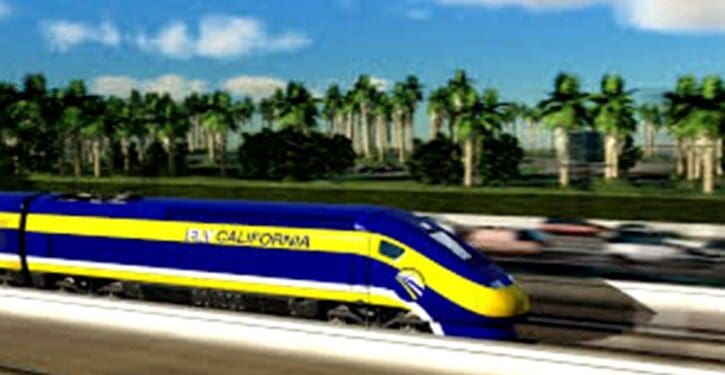
The Biden administration wants to spend another $500 million on a $9.3 billion project to expand the Bay Area Rapid Transit (BART) subway system near San Francisco. That makes no sense, because BART has a dwindling ridership and it is now so wasteful that it consumes more energy per user than cars do. 60% of the people who used to ride it stopped riding during the pandemic and never returned, leaving trains mostly empty. Expanding it would also siphon away passengers from less wasteful forms of transportation, such as buses that do not have the massive fixed costs associated with passenger rail systems.
Marc Joffe of the Cato Institute notes:
A six‐mile extension to the Bay Area Rapid Transit (BART) system would have a minimal impact on personal vehicle emissions according to data in a federal travel forecast. Further, because the federal analysis is based on pre‐pandemic socioeconomic forecasts and travel patterns, it greatly overestimates future ridership on the subway extension, which has a $9.3 billion estimated cost.
A Federal Transit Administration (FTA) profile of the project shows that the BART extension would provide 32,900 passenger trips per weekday, or just over 9.5 million trips per year in 2040. But most of the new BART passengers would be switching from buses and light rail vehicles already serving the area. The detailed travel forecast report, obtained from the FTA via a Freedom of Information Act request, shows that only 10,700 (about a third of) the BART riders will be new to transit….Generously assuming that all the new riders switch from cars, the projected annual reduction in passenger vehicle trips would be…just 0.4%.
So, the $9.3 billion subway project would put only a small dent in San Jose’s greenhouse gas emissions once it is fully built out. Further reducing the net climate benefits of this project is the fact that it will add greenhouse gas emissions during the construction phase given its need for steel and concrete. Further, many if not most of the automobile trips it will replace will be from electric vehicles. In Santa Clara County, which encompasses San Jose, Zero Emission Vehicles accounted for 37.5% of all new vehicle sales during the first quarter of 2023. California plans to prohibit gasoline‐powered vehicle sales in 2035, the year after the San Jose subway extension is supposed to be completed.
So, an analysis of official data shows that the BART extension is an inefficient climate solution. But it gets worse when one considers the assumptions underlying some of the numbers. The federal travel results forecast mentioned above was based on transit utilization patterns from 2019, before COVID-19 deeply cut into transit ridership. Recently, BART ridership has been running at just 40% of 2019 levels. Second, the projection assumes “population and employment in the model area are expected to grow by about 29% and 26% respectively between 2019 and 2040”. This seems unlikely since San Jose’s population has been falling in recent years. The most recent US Census estimates show that the city’s population declined from 1,013,221 is 2020 to 971,223 in 2022.
Yet the Biden administration has included another $500 million for the BART system in its 2024 budget.
Even worse, the Biden administration also wants to spend $8.8 billion expanding D.C.’s Union Station, which handles only a small fraction of the traffic it used to. The subway line that runs through Union Station has far fewer users than before the pandemic, only about 40 percent of pre-pandemic levels. Commuter rail lines running through Union Station have even worse statistics. As of December 2022, Virginia Railway Express ridership was only a quarter of its 2019 levels. Its average rail car is only about 30 to 40 percent full on a weekday. Maryland Area Regional Commuter rail carried only a third of the people it carried just before the pandemic in February 2020. Rail ridership will never return to pre-pandemic levels, because of the rise in remote work. A third of the Washington D.C., metropolitan area population now works remotely, quadruple the number who worked remotely before the pandemic.
Trying to get people to ride mass transit systems was difficult even before the rise of remote work, because it takes so long to commute to and from work on mass transit. It can take an hour and a half to take buses or trains to work for a commute that would take only half an hour by car. Most train and bus stations are not right near where people live or work, and people taking mass transit often have to ride multiple different buses or trains to get to work.



